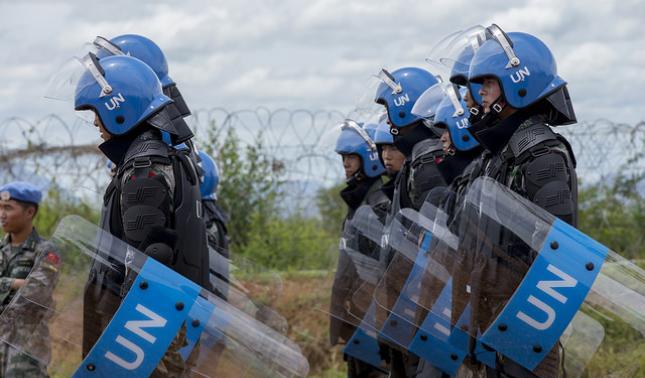United Nations peacekeepers (also known as Blue Helmets) consist of soldiers, police officers, and civilian personnel. In other words, the UN military personnel are the Blue Helmets on the ground that help countries navigate the difficult path from conflict to peace. Today, they are composed of over 97,000 military personnel contributed by national armies from across the globe.
UN peacekeepers have the ability to deploy troops and police from around the world, integrating them with civilian peacekeepers to address a range of mandates set by the United Nations Security Council and General Assembly. All military personnel working under the Blue Helmet are first and foremost members of their own national armies and are then seconded to work under the command and control of the United Nations.
UN military personnel can be called upon to:
- Protect civilians and UN personnel;
- Monitor a disputed border;
- Monitor and observe peace processes in post-conflict areas
- Provide security across a conflict zone;
- Provide security during elections;
- Assist in-country military personnel with training and support
- Assist ex-combatants in implementing the peace agreements; they may have signed.
Since 1948, the UN has helped end conflicts and foster reconciliation by conducting successful peacekeeping operations in dozens of countries, including Cambodia, El Salvador, Guatemala, Mozambique, Namibia and Tajikistan.
There are currently 12 peacekeeping operations led by UN’s Department of Peace Operations which are listed as below:
1.MINURSO, Western Sahara
2.MINUSCA, Central African Republic
3.MINUSMA, Mali
4.MONUSCO, D.R. of the Congo
5.UNDOF, Golan
6.UNFICYP, Cyprus
7.UNIFIL, Lebanon
8.UNISFA, Abyei
9.UNMIK, Kosovo
10.UNMISS, South Sudan
11.UNMOGIP, India and Pakistan
12.UNTSO, Middle East
By: Dr. Parastou Esmailzadeh
Attorney at Law, Ph.D. In International Law, Head of International Trade Law Department




